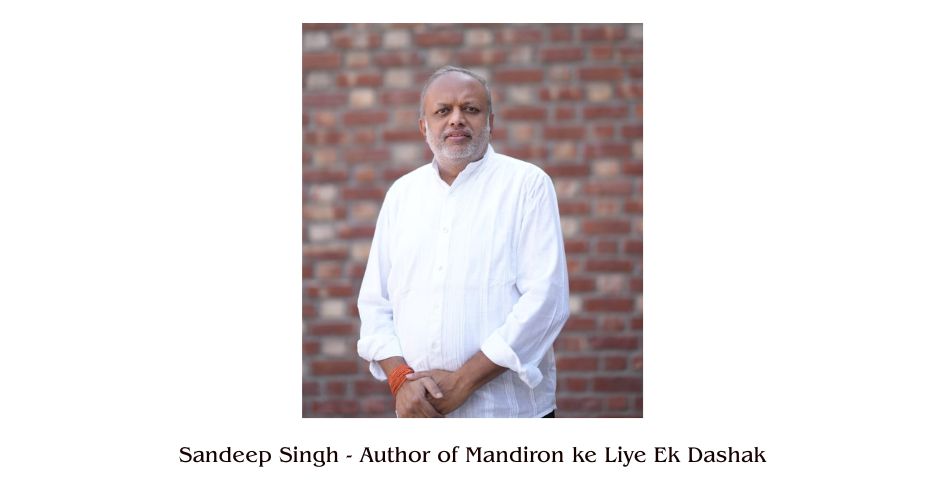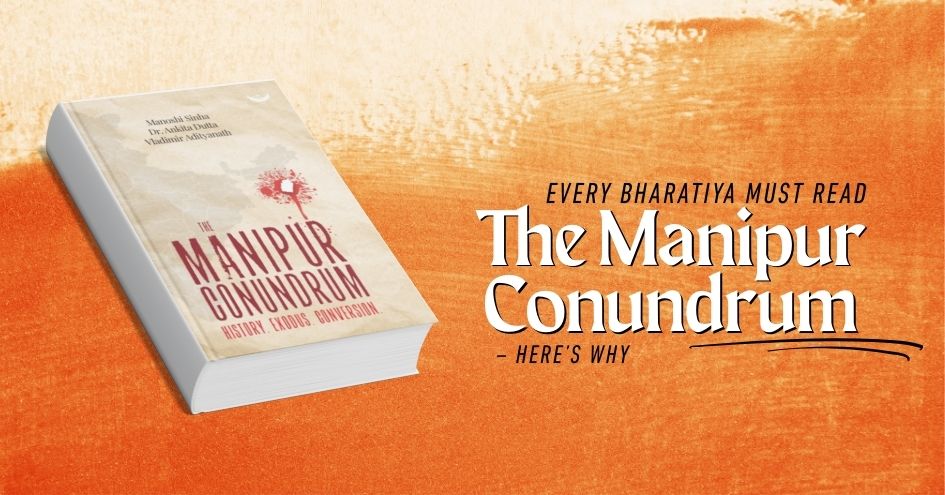
In Mandiron ke Liye Ek Dashak, the second volume following his seminal work Mandir Economics, Shri Sandeep Singh delivers a searing, meticulous, and richly documented continuation of his call to re-evaluate the civilizational role of Mandirs in Bharat. While the first volume laid the economic foundations and historical patterns that underpinned the financial and administrative handling of temples, this book deepens the civilizational inquiry. It is less about numbers and more about narratives. Structured into four robust parts, this work serves as both diagnosis and prescription for the ailment of "temple neglect" not merely in the physical sense, but in the realm of ideas, identity, and societal dharma.
Part 1: The Anti-Mandir Framework
Singh begins by dissecting what he terms the "Anti-Mandir Framework" a deliberate, systemic erosion of the sanctity and autonomy of Mandirs. Drawing on historical references like the 1931 Hindu Religious and Charitable Endowments Committee in the United Provinces, he provides a scholarly account of how colonial-era interventions created the foundation for modern control mechanisms over Hindu temples. This administrative capture, Singh argues, was not incidental. It was the start of a larger civilizational compromise, where the temples once autonomous centers of learning, economy, and spiritual power were slowly reduced to manageable "assets." The narrative Singh builds here is both damning and data-driven, with citations that reflect years of careful research and ideological clarity.

Part 2: The Loss of Mandir Consciousness Among Hindus
If the first section reveals external attacks, the second part of the book explores internal erosion. Singh posits that the bourgeoisification of Hindus their assimilation into materialistic, westernised, and status-quo driven lifestyles - has alienated them from the deeper significance of Mandirs. He argues, provocatively but persuasively, that non-Hindus and non-Bharatiyas today understand Mandirs better than many Hindus do. Singh deconstructs several popular cultural constructs "Sone ki Chidiya," "Bharat vs. India," "Atithi Devo Bhava," and "Vasudhaiva Kutumbakam" calling them misappropriated or misinterpreted when removed from their scriptural and civilizational context. His critique extends to how Hindus have accepted western constructs of "religion" and erroneously equated "Dharma" with it, and how a failure to study their own scriptures has created a vacuum filled with spiritual misunderstanding. He draws on illustrative examples such as the administrative model of the Badrinath Mandir, arguing that temples have increasingly been reduced to profit centers rather than centers of Dharma and public good.
Part 3: Enemies Within - The Sarkari and Rajneetik Hindu
In what is arguably the most provocative section of the book, Singh identifies the internal saboteurs of the temple ecosystem - the "Sarkari Hindu" and the "Rajneetik Hindu." These are not abstract metaphors but carefully profiled archetypes, who Singh believes contribute more to the degradation of Mandirs than overt external threats. Through compelling case studies like the contrast between Pushkar Mandir and the Ajmer Dargah, Singh makes the case that unless Hindus reclaim their spiritual institutions from political interference, the civilizational spine of Bharat is in jeopardy. The juxtaposition of these internal threats with the vulnerability of Mandirs - their administrative dilution, ritual disruptions, and alienation from local communities - is hard-hitting. It underlines the core thesis of the book: lose the Mandirs, and you lose the civilization.

Part 4: Dismantling the Anti-Mandir Framework - A Call to Action
The concluding section of the book is both a call to arms and a detailed blueprint for civilizational restoration. Singh is not merely content with critique; he offers a comprehensive framework to reclaim and rejuvenate the temple ecosystem. This includes legal strategies for reclaiming temple control, the revival of Sanskrit, the restoration of Murtis and Vigrahas, and a systematic plan to re-position temples as centers of learning, culture, defense, and economic self-sufficiency. One of the most powerful case studies here is the Karuveli experience, which Singh highlights as a successful example of reclaiming Mandir autonomy and re-centering it within the community. He also speaks about the significance of Tirthasthans (pilgrimage places), the need for literature and music revival linked to temple traditions, and the imperative to protect Hindu intellectual property rights. Particularly noteworthy is his discussion on temple finance and the emerging need for structured courses in Mandir Prabandhan (Temple Management). Singh makes a compelling argument that just as corporate organizations invest in leadership pipelines, temples must develop cadres of devoted and competent managers grounded in Dharma and indigenous knowledge systems.
Conclusion: A Civilizational Manual for the Decade
Mandiron ke Liye Ek Dashak is not just a sequel it is a civilizational manual. It reads as a manifesto, a history book, a cultural critique, and a guidebook all rolled into one. Singh's writing is assertive, often unsparing, yet deeply rooted in scholarship and on-ground realities. This volume is for the reader who wants to understand why Mandirs matter not just to Hindus, but to Bharat's past, present, and future. Singh has provided a roadmap it now remains to be seen how many are willing to walk it. A must-read for thinkers, devotees, policymakers, and anyone invested in the civilizational continuity of Bharat.
 Professor Aditya Trivedi is the Director of the Rashtram School of Public Leadership.
Professor Aditya Trivedi is the Director of the Rashtram School of Public Leadership.

Saiswaroopa Iyer is an author who needs no introduction. She is one of the authors who pioneered Puranic fiction in India with books exploring tales f...

Indra killed Vritra using his Vajra. Once again, good won over evil and dharma over adharma. This is a story most Bharatiyas know. The story is a pa...

The recently-released book on Manipur titled The Manipur Conundrum – History. Exodus. Conversion. – is the result of tiring efforts by three Bharatiya...